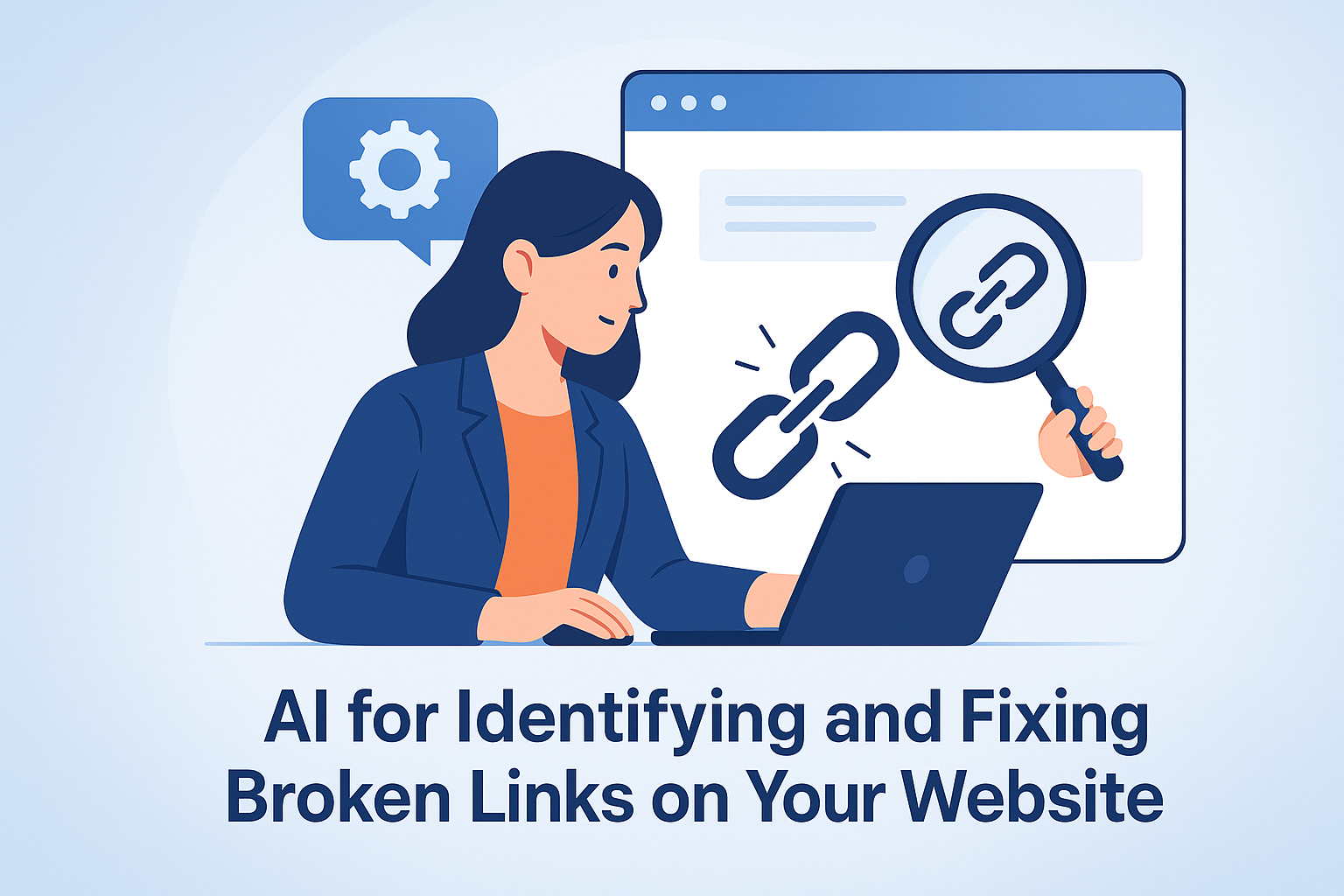Internal linking is one of the most underused but powerful levers in SEO. Done right, it helps you:
- Boost the rankings of key pages
- Guide users through your content funnel
- Spread link equity efficiently
- Strengthen topical clusters and site architecture
But manually finding and managing internal links is time-consuming—and easy to get wrong.
Thanks to AI, you can now automate the discovery and execution of smart internal linking opportunities using tools like DIYSEO GPT and the DIYSEO AI Writer, while amplifying authority through the DIYSEO Link Marketplace.
Let’s walk through how to make internal linking a repeatable, AI-driven SEO advantage.
Why Internal Linking Matters
While external backlinks get more attention, internal links are the secret weapon of on-page SEO. They help search engines:
- Understand the relationship between pages
- Prioritize your most important content
- Index new pages faster
- Distribute PageRank throughout your site
Benefits of Strong Internal Linking:
| Benefit | SEO Impact |
|---|---|
| Improves crawlability | Ensures all pages are discoverable by search engines |
| Enhances topical authority | Reinforces content clusters and subject depth |
| Increases dwell time | Encourages users to navigate across multiple pages |
| Supports ranking of pillar pages | Channels internal authority to target URLs |
Step-by-Step: Identifying Internal Link Opportunities with AI
✅ Step 1: Audit Your Internal Linking Structure Using DIYSEO GPT
Start with the Page-to-Page Link Suggestions prompt in DIYSEO GPT.
Prompt:
“Which existing blog posts or pages should link to my pillar page on ‘AI SEO tools’? Suggest anchor text for each link.”
DIYSEO GPT returns:
- Pages on your site with topical relevance
- Suggested anchor text that fits naturally
- Pages that should link but don’t yet
- Pages with too many outbound links or broken link paths
This transforms internal linking from guesswork to data-backed strategy.
✅ Step 2: Identify Orphan Pages and Missed Link Equity
Use the Crawled – Not Indexed or Low Performance Pages prompts to uncover orphan pages—content that’s live but has no internal links pointing to it.
Ask:
“Which of my published blog posts are not linked to from other pages and may be underperforming as a result?”
Once identified, link to these pages from relevant, higher-authority pages to unlock their SEO potential.
✅ Step 3: Use DIYSEO AI Writer to Insert Contextual Links
Now that you have a list of target pages and anchor text, use the DIYSEO AI Writer to seamlessly integrate internal links into your content.
Prompt Example:
“Insert a contextual link to /ai-content-strategy in this paragraph using the anchor text ‘AI blog planning framework.’ Make it sound natural.”
AI ensures links are added where they make sense—without interrupting the flow of the content.
Repeat across your cluster to strengthen relationships between subtopics and pillar pages.
✅ Step 4: Create Smart Navigation Paths Through Topical Clusters
If you’re using a topic cluster model (and you should be), AI can help you create navigational bridges between related posts.
Prompt:
“Map internal link flow between the pillar page ‘AI SEO for Beginners’ and its cluster pages. Suggest where and how to interlink them.”
DIYSEO GPT may suggest:
- Linking from each cluster post back to the pillar using different anchors
- Adding links between sibling posts (e.g., AI for Keyword Research → AI for Technical SEO)
- Reinforcing cornerstone content from your homepage or footer
These strategies signal authority and structure—two keys to improving rankings.
✅ Step 5: Optimize Anchor Text for Semantic Relevance
Google uses anchor text to interpret page relationships and ranking context. The DIYSEO AI Writer can help you generate:
- Keyword-rich anchor text
- Natural, varied phrasing
- Avoidance of over-optimization or repetition
Prompt:
“Generate 5 anchor text variations to link to /ai-seo-strategy. Include long-tail phrases and natural language.”
Output:
- how AI can improve your SEO strategy
- our complete guide to AI-powered SEO
- step-by-step SEO automation with AI
- building a smarter blog with AI tools
- strategic AI SEO framework for 2024
Mix and match these across your internal links to cover more semantic ground.
✅ Step 6: Re-Audit and Track Link Equity Distribution Over Time
Once internal links are live, run follow-up prompts in DIYSEO GPT like:
“How many internal links now point to /ai-seo-tools and from which pages?”
“Are any high-authority pages not linking to my pillar pages yet?”
You can use this information to re-balance your site’s internal linking structure as your content grows.
Bonus: Amplify Authority with DIYSEO Link Marketplace
Internal links build structure—but you still need external validation. Use the DIYSEO Link Marketplace to:
- Build backlinks to your pillar pages
- Funnel domain authority to your content clusters
- Target industry blogs and trusted sources
Use internal links to connect cluster posts to the pillar, then use external links to amplify the pillar’s authority.
Link Promotion Strategy:
- Optimize pillar and cluster with internal links
- Build 3–5 external links to the pillar page using:
- AI SEO automation guide
- complete SEO content framework
- smart SEO with AI tools
This combined approach fuels faster indexing, stronger rankings, and better crawl paths.
Real-World Example: Lifting Rankings with Internal Linking
Problem: A blog series on AI SEO had great content but inconsistent rankings and one pillar page stuck at position #9.
DIYSEO Fix:
- Used Page-to-Page Link Suggestions to identify 12 internal linking opportunities
- Added contextual links from related posts to the pillar using varied anchor text
- Identified 2 orphaned blog posts and linked them into the cluster
- Promoted the pillar page using 4 backlinks from the DIYSEO Link Marketplace
Results:
- Pillar page jumped to #3 within 30 days
- Average session duration increased by 38%
- Cluster posts ranked for 11 new long-tail keywords
- Bounce rate decreased by 24% due to improved navigation
DIYSEO Internal Linking Workflow
| Step | Tool | Task |
|---|---|---|
| Find linking opportunities | DIYSEO GPT – Link Suggestions | Map out internal link structure |
| Insert links naturally | DIYSEO AI Writer | Add contextual, semantic links |
| Improve anchor variety | DIYSEO AI Writer | Generate keyword-rich phrases |
| Audit linking flow | DIYSEO GPT | Track internal equity distribution |
| Promote key pages | DIYSEO Link Marketplace | Boost authority with external backlinks |
Final Thoughts
Smart internal linking is the glue that holds your content strategy together—and with AI, you can now scale it with precision.
With DIYSEO, you can:
- Uncover every internal linking opportunity with confidence
- Write and insert optimized links using natural, AI-generated phrasing
- Structure topic clusters that boost crawlability and authority
- Support high-value pages with external links via the DIYSEO Link Marketplace
The path to better rankings isn’t just external—it’s internal. Let AI show you the way.
Frequently Asked Questions
1. What is internal linking, and why is it important for SEO?
Internal linking refers to the practice of connecting pages within the same website. It’s crucial in SEO for several reasons. Firstly, it helps search engines like Google understand the structure of your website, which is essential for proper indexing and ranking. It also distributes page authority and ranking power across your site, helping lesser-known pages rank better. Moreover, internal links improve the user experience by guiding visitors to relevant content, keeping them on your site longer, and increasing engagement and conversion rates. Overall, well-orchestrated internal linking is a critical component of any effective SEO strategy.
2. How can AI assist in identifying internal linking opportunities?
AI can revolutionize the way we identify internal linking opportunities by analyzing large volumes of data much faster and more accurately than humans. AI algorithms can map out your website’s architecture, identifying pages that might be isolated and in need of links to boost their visibility. They can also analyze content contextually to find relevant linking opportunities. By examining user pathways, AI can pinpoint which links might enhance user journeys and improve your site’s SEO performance. Furthermore, AI tools can continuously monitor your site, spotting new opportunities as they arise and suggesting optimal locations for new links. This ongoing, dynamic approach saves time and ensures your linking strategy evolves alongside your website.
3. What are the specific benefits of using AI over manual methods for internal linking?
Using AI for internal linking offers several distinct advantages over traditional manual methods. One of the most significant benefits is efficiency. AI is capable of processing vast amounts of data rapidly, ensuring no potential linking opportunity goes unnoticed. It removes much of the labor-intensive work associated with analyzing website architecture and user behavior. Additionally, AI brings a level of precision and personalization that human analysis might miss. With the ability to understand and interpret user intent, AI can craft linking strategies tailored to enhance user engagement. Finally, AI systems can learn and adapt over time, providing ongoing enhancements to your internal linking strategy without the need for constant human intervention. This continuous improvement can give you a significant edge in the competitive world of SEO.
4. Are there specific AI tools recommended for optimizing internal linking?
Yes, there are several AI-powered SEO tools specifically designed to optimize internal linking. Tools like Market Muse, Clearscope, and SurferSEO are popular for their robust analytics capabilities. They help identify content gaps and contextual linking opportunities, making them excellent choices for crafting effective internal linking strategies. Each tool has unique features, such as content grading, keyword suggestions, and topic modeling, which assist significantly in identifying where internal links will be most impactful. However, the key is to choose a tool that aligns with your website’s specific needs and goals and integrates well with your existing processes and workflows.
5. How does AI ensure the quality of internal links, beyond just identifying opportunities?
AI goes beyond simply spotting internal linking opportunities by ensuring that the links it suggests are of high quality and relevance. Quality is gauged based on several factors, such as contextual relevance, user intent, and the overall user experience. An AI tool analyzes whether a link is contextually appropriate for the connected pages, ensuring that the internal link provides real value to both search engines and users. Additionally, AI tools can prioritize links based on authority distribution, making sure you’re passing link juice to the right pages. These tools also track user behavior post-click to refine their linking strategies further, making adjustments as needed to ensure the highest quality of internal links. This holistic approach not only assists in improving SEO but ensures your website consistently delivers a seamless, user-centered experience.



